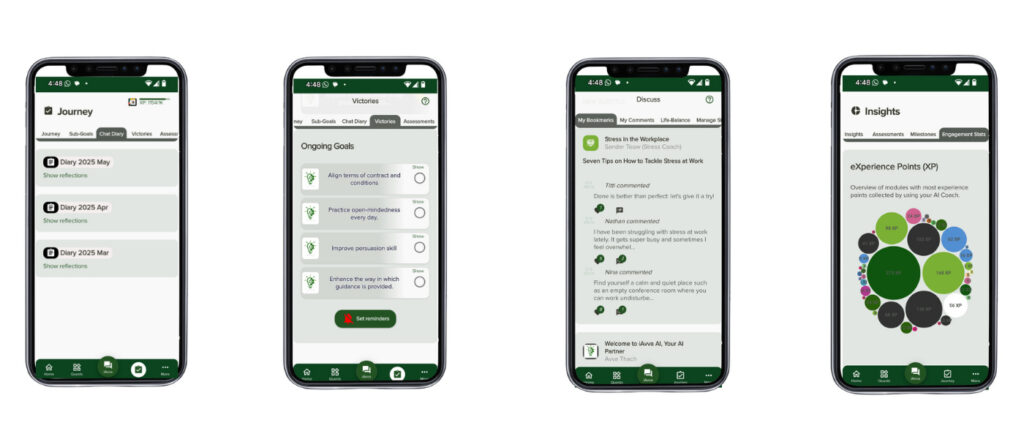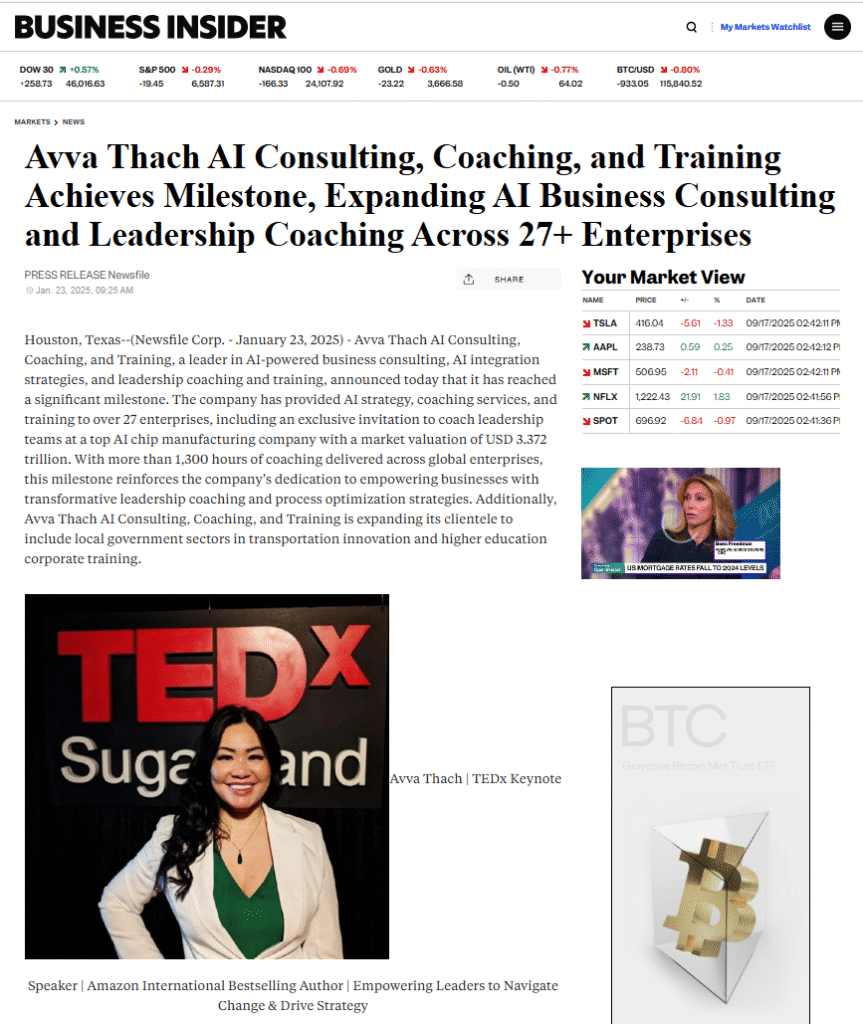Redefining Enterprise Security Management
Introduction to Redefining Enterprise Security Management
Cybersecurity is no longer just an IT issue; it’s a boardroom priority. In fact, 60% of small businesses close within six months of a cyber attack (U.S. National Cyber Security Alliance). If that statistic doesn’t make you squirm in your seat, I don’t know what will. The stakes are high, and the consequences of outdated security strategies can be catastrophic.
Let’s face it: traditional security management approaches are like using a flip phone in the age of smartphones. Sure, it gets the job done-sort of-but you’re missing out on all the cool features that could make your life easier and safer. With the rise of sophisticated cyber threats and increasingly complex regulatory landscapes, it’s time to rethink how we approach enterprise security management.
Key Insight: The modern cybersecurity landscape demands a shift from reactive measures to proactive strategies that incorporate advanced technologies and real-time threat detection.
The challenge isn’t just about defending against attacks; it’s about integrating comprehensive cybersecurity solutions across your entire organization. Think about it: if your security operations center (SOC) is still relying on manual processes or outdated SIEM solutions, you’re practically inviting cybercriminals to set up shop in your network.
Here’s where redefining enterprise security management comes into play. It’s not merely about bolstering defenses; it’s about transforming how we think about risk and vulnerability management. By leveraging cloud security services, endpoint security measures, and threat intelligence platforms, organizations can create an agile response framework that adapts to evolving threats.
The Cybersecurity Revolution
So what does this revolution look like? Imagine a world where managed detection and response (MDR) services not only detect threats but also predict them before they occur-like having a crystal ball for cyber risks! This proactive approach is critical for maintaining compliance with governance frameworks and ensuring data breach prevention services are effective.
Moreover, with advancements in security analytics and automation technologies, organizations can streamline their incident response services. No more scrambling when an alert goes off-your team can act decisively based on real-time insights from integrated systems.
This isn’t just wishful thinking; companies like ReliaQuest are leading the charge with their innovative platform features that enhance visibility across networks while optimizing ReliaQuest pricing models to fit various budgets. The future of enterprise cybersecurity solutions lies in collaboration between cutting-edge technology partners who understand the landscape’s complexities.
A New Mindset for Security
The most significant shift is cultural: fostering a mindset where every employee understands their role in cybersecurity-from HR training programs emphasizing identity and access management solutions to IT departments collaborating closely with business units for holistic risk assessments.
This redefined strategy isn’t just beneficial; it’s essential for survival in today’s digital world. The question isn’t whether to adapt but how quickly you can implement these changes before the next wave of cyber threats hits.
The Current Landscape of Enterprise Security
Picture this: a single cyber attack can cost a company an average of $3.86 million (IBM). That’s not pocket change! For many businesses, it’s the difference between thriving and going under. As the frequency and sophistication of cyber threats escalate, the need for redefining enterprise security management has never been more critical.
Take a moment to consider this: 43% of cyber attacks target small businesses (Verizon). They may think they’re flying under the radar, but these companies are prime targets due to their often inadequate security measures. It’s like leaving your front door wide open and hoping no one walks in. Spoiler alert: they will.
Key Insight: The shift in threat patterns demands that businesses rethink their security strategies to include advanced threat protection and proactive threat management.
Statistics on Security Breaches and Their Impact on Businesses
Let’s get down to brass tacks. Cybersecurity breaches are not just annoying; they’re disastrous. According to a study by Accenture, organizations experience an average of 130 security breaches per year. Each breach can lead to significant downtime, loss of customer trust, and hefty fines for non-compliance with data protection regulations.
- Downtime: The average cost of downtime is estimated at $5,600 per minute.
- Data Loss: A staggering 60% of small businesses close within six months after a major data breach (U.S. National Cyber Security Alliance).
- Reputation Damage: 75% of consumers would stop doing business with a company after a data breach (Gemalto).
Emerging Threats in the Digital Environment
The digital landscape is like a wild west where new threats pop up faster than you can say “phishing scam.” Ransomware attacks have become increasingly prevalent, with attackers leveraging sophisticated tactics that involve encrypting vital data and demanding ransom for its release. It’s like being held hostage by your own files!
This evolving threat landscape necessitates robust cyber risk management strategies. Organizations must invest in advanced tools such as managed security services that provide 24/7 monitoring and real-time threat detection capabilities. Think about it: would you rather wait for an attack to happen or have systems in place that catch it before it wreaks havoc?
Regulatory Compliance Challenges
Navigating compliance frameworks can feel like walking through a minefield-one wrong step can lead to explosive consequences! Regulations such as GDPR, CCPA, and HIPAA impose strict requirements on how organizations handle sensitive information. Failing to comply can result in fines reaching into millions.
- Cultural Shift: Companies must cultivate a culture where compliance isn’t just an IT issue but everyone’s responsibility.
- Training Programs: Regular training on compliance requirements should be integrated into employee onboarding processes.
- Audit Readiness: Organizations should maintain continuous readiness for audits by implementing effective documentation practices.
The interesting part? By investing in cybersecurity consulting services that focus on compliance alongside security measures, organizations can turn regulatory challenges into opportunities for growth. It’s not just about avoiding penalties; it’s about building trust with customers who expect their data to be handled responsibly.
Key Components of Redefining Security Management
Cybersecurity is like a game of chess, but the stakes are higher than just a checkmate. With the right moves, organizations can protect their assets and outsmart cyber adversaries lurking in the shadows. Here’s the kicker: 90% of security breaches are caused by human error (IBM). That means your biggest vulnerability might just be sitting at a desk, blissfully unaware of their role in your security strategy.
Redefining enterprise security management isn’t just about technology; it’s about integrating key components that create a robust defense against modern threats. Think of it as assembling an Avengers team for your organization-each member plays a critical role in combating cyber villains.
Key Insight: A comprehensive approach to security management combines advanced technologies, proactive strategies, and employee engagement to effectively mitigate risks.
Integration of AI and Machine Learning Technologies
The future of cybersecurity is here, and it’s powered by artificial intelligence (AI) and machine learning. Imagine having a digital Sherlock Holmes on your team-AI can analyze vast amounts of data to detect anomalies that human eyes might miss. It’s like upgrading from a magnifying glass to a supercomputer!
Companies leveraging AI-driven threat detection solutions can respond to incidents faster than ever before. For instance, employing managed detection and response (MDR) services allows organizations to harness the power of AI for real-time threat hunting and incident response. This proactive approach not only identifies potential threats but also learns from them, continuously improving defenses.
Holistic Approach to Risk Management
A piecemeal approach to security is like trying to patch up a sinking ship with duct tape-it might hold for a while, but eventually, you’re going down! A holistic risk management strategy ensures that every aspect of your organization works together seamlessly. This means breaking down silos between departments and fostering collaboration across teams.
- Comprehensive Assessments: Regularly evaluate vulnerabilities across all systems including network security and cloud services.
- Cross-Departmental Training: Ensure all employees understand their role in maintaining cybersecurity-from HR’s involvement in identity access management solutions to IT’s focus on endpoint security.
- Continuous Improvement: Adapt strategies based on evolving threats and lessons learned from past incidents.
This integrated approach helps organizations not only defend against current threats but also anticipate future risks. Think ahead-what would you do if ransomware knocked at your door tomorrow? Having a plan in place can mean the difference between recovery and catastrophe.
Employee Training and Awareness Programs
If you think training employees is just another checkbox on your compliance list, think again! Engaging your workforce in cybersecurity awareness programs is essential for building a culture of vigilance. Employees are often the first line of defense against cyber attacks; if they’re not equipped with knowledge, they’re essentially handing attackers the keys to the kingdom.
- Interactive Workshops: Use gamification techniques to make training fun; think escape rooms where employees solve cybersecurity puzzles!
- Spear Phishing Simulations: Regularly test employees with mock phishing attacks so they can identify real threats when they encounter them.
- Culture Building: Foster an environment where reporting suspicious activities is encouraged rather than seen as an inconvenience.
The interesting part? Organizations that invest in comprehensive training programs report up to 70% fewer successful phishing attacks. That’s not just savings-it’s peace of mind!
The Role of Leadership in Security Management Transformation
Leadership in cybersecurity is not just a title; it’s a necessity. A staggering 68% of leaders recognize that integrating AI strategies with leadership coaching significantly boosts the effectiveness of transformation efforts (Harvard Business Review). If you’re still relying on outdated tactics to secure your enterprise, you might as well be throwing confetti at a firestorm.
When it comes to redefining enterprise security management, the role of leadership is paramount. Imagine this: your organization has the latest cybersecurity tools, but if your leaders don’t champion a proactive security culture, those tools are about as useful as a chocolate teapot. The transformation starts at the top. Leaders must not only endorse these initiatives but actively participate in shaping and implementing security strategies.
Key Insight: Effective leadership buy-in is crucial for cultivating comprehensive security strategies that resonate throughout the organization.
Importance of Leadership Buy-In for Effective Security Strategies
The first step in any successful security transformation is ensuring that leadership is on board. Without their commitment, even the best-laid plans can fall flat. Think about it: if executives view cybersecurity as an IT issue rather than a business imperative, they’re setting everyone up for failure. It’s akin to having a ship without a captain-good luck navigating those choppy waters!
Leaders need to communicate the significance of cybersecurity across all levels of the organization. This includes:
- Setting Clear Expectations: Define roles and responsibilities regarding cybersecurity across departments.
- Allocating Resources: Ensure that teams have access to necessary tools and training for effective threat detection and incident response.
- Encouraging Open Dialogue: Foster an environment where employees feel comfortable reporting potential threats without fear of repercussions.
Cultivating a Culture of Security Within Organizations
A culture of security isn’t built overnight; it requires consistent effort from leaders who prioritize it as part of their organizational DNA. Here’s where things break down: many companies treat security like an afterthought-an obligatory checkbox rather than an ongoing commitment. This mindset can lead to catastrophic vulnerabilities.
Cultivating this culture involves integrating cybersecurity practices into everyday operations and decision-making processes. For instance:
- Regular Training Sessions: Implement continuous education programs focusing on emerging threats and best practices in cybersecurity.
- Spearheading Initiatives: Leaders should actively participate in training sessions, demonstrating their commitment to fostering a secure environment.
- Praising Vigilance: Recognize employees who identify threats or suggest improvements to existing protocols-everyone loves a little recognition!
Leadership Coaching for Enhancing Security Awareness Among Teams
If leaders are not equipped with the knowledge to guide their teams effectively, they may inadvertently create gaps in your security framework. Investing in leadership coaching can enhance understanding around critical areas such as cyber threat intelligence and vulnerability management.
This coaching should focus on practical application rather than theoretical knowledge. Consider these strategies:
- Scenario-Based Learning: Use real-world scenarios during training sessions to simulate potential attacks and effective responses.
- Cross-Functional Collaboration: Encourage leaders from various departments (like HR and IT) to work together on crafting holistic security strategies.
- Mentorship Programs: Pair seasoned leaders with those less experienced in cybersecurity matters for hands-on guidance and support.
The interesting part? Organizations that invest in leadership development see measurable improvements not only in employee engagement but also in overall security posture. It’s like upgrading from dial-up internet to fiber optic-you’ll be amazed at how much faster things run!
Strategies for Implementing Redefined Security Measures
Let’s be real: implementing new security measures can feel like trying to teach an old dog new tricks. But here’s the kicker: investing in redefined enterprise security management can reduce the likelihood of breaches by up to 70% (Cybersecurity Ventures). If that doesn’t motivate you to shake things up, I don’t know what will!
In a world where cyber threats are evolving faster than a superhero’s origin story, it’s essential to have a robust strategy in place. Think of your security framework as a well-oiled machine; every cog needs to work together seamlessly. Here are some strategies that can help you transform your security measures from outdated and reactive to cutting-edge and proactive.
Key Insight: A comprehensive approach integrates advanced technologies, data analytics, and cross-departmental collaboration for effective threat management.
Developing a Comprehensive Security Framework
The first step is crafting a comprehensive security framework that addresses all aspects of your organization. It’s not just about having firewalls and antivirus software; it’s about creating an ecosystem where every layer of security complements the others.
- Risk Assessment: Conduct thorough assessments regularly to identify vulnerabilities across your network, cloud services, and endpoints.
- Policy Development: Create clear policies outlining acceptable use, incident response protocols, and employee responsibilities for cybersecurity.
- Simplified Communication: Ensure that all employees understand these policies through regular training sessions and accessible documentation.
This isn’t just busywork; it’s about laying the groundwork for a culture of security awareness. Think of it as setting the stage for an epic showdown against cyber villains!
Utilizing Data Analytics for Threat Detection and Response
If you’re not using data analytics in your cybersecurity strategy, you’re missing out on one of the most powerful tools at your disposal. Imagine having access to real-time insights that can help predict attacks before they happen-like having a radar system for cyber threats!
Implementing security analytics solutions, coupled with managed detection and response (MDR) services, allows organizations to analyze patterns and anomalies in user behavior. This proactive approach enables quicker responses to potential threats.
- Anomaly Detection: Use machine learning algorithms to identify unusual patterns that could indicate unauthorized access or data breaches.
- Automated Reporting: Set up automated alerts that notify relevant teams when suspicious activity is detected so they can act immediately.
- Breach Simulation: Regularly conduct breach simulations using analytics insights to test incident response effectiveness and improve strategies accordingly.
This way, you’re not just reacting; you’re anticipating-and that’s where the magic happens!
Collaboration Between IT and HR Departments for Workforce Training
The most significant vulnerability in any organization often walks around on two legs: employees. That’s why collaboration between IT and HR departments is crucial for effective workforce training on cybersecurity practices. When these two teams work together, they create a holistic approach that encompasses both technical skills and cultural awareness.
- Cross-Training Programs: Develop training programs where IT educates HR on technical aspects while HR helps IT understand employee concerns regarding compliance.
- Spear Phishing Drills: Run regular drills with employees across departments to identify phishing attempts in real time-nothing like hands-on learning!
- Culture Workshops: Host workshops focusing on building a culture of accountability where everyone understands their role in maintaining security protocols.
This collaborative effort ensures everyone is on board with the same mission: protecting the organization from cyber threats while making them feel empowered rather than overwhelmed.
The takeaway? Redefining enterprise security management requires more than just technology; it demands an integrated approach involving people, processes, and proactive measures. Now go forth and fortify your defenses-you’ve got this!
The Future of Enterprise Security Management
Here’s a jaw-dropper: By 2025, cybercrime is projected to cost the world $10.5 trillion annually (Cybersecurity Ventures). Yes, you read that right-trillion with a “T.” If that doesn’t send shivers down your spine, I don’t know what will. As we hurtle into this brave new digital frontier, redefining enterprise security management becomes imperative for survival.
Think of it this way: if your security strategy isn’t evolving as fast as the threats against it, you might as well be using a rubber band to hold together a castle made of cards. The reality is that emerging technologies are reshaping the cybersecurity landscape at lightning speed. From AI-powered threat detection to cloud security services that enhance overall resilience, the future is all about adaptability.
Key Insight: The future of enterprise security management hinges on embracing evolving technologies and fostering an adaptive culture that anticipates threats rather than merely reacting to them.
Evolving Technologies and Their Implications on Security Management Practices
The rise of artificial intelligence and machine learning has transformed how organizations approach threat detection. Imagine having a super-intelligent assistant that not only identifies threats but learns from every incident to improve its defenses. This isn’t science fiction; it’s happening now! Companies leveraging AI-driven cybersecurity solutions can analyze vast amounts of data in real-time, detecting anomalies faster than ever before.
For instance, consider how managed detection and response (MDR) services are revolutionizing incident response. These services offer 24/7 monitoring and proactive threat management strategies that can identify potential breaches before they escalate into full-blown disasters. It’s like having an elite SWAT team ready to swoop in at the first sign of trouble!
The Importance of Adaptability in Security Strategies as Threats Evolve
The interesting part? Cyber threats are becoming increasingly sophisticated; traditional methods simply won’t cut it anymore. Organizations need to cultivate a mindset of adaptability where security strategies evolve alongside emerging risks. Think about how ransomware attacks have morphed over time-attackers are now employing advanced techniques like double extortion, where they not only encrypt data but threaten to leak sensitive information unless their ransom is paid.
- Proactive Threat Management: Invest in continuous vulnerability assessments to stay ahead of evolving threats.
- Cross-Functional Collaboration: Facilitate communication between IT and other departments for holistic risk management.
- Cultural Mindset Shift: Foster an environment where everyone understands their role in maintaining security protocols.
This shift isn’t just about adopting new technologies; it’s about creating a culture where adaptability is woven into the very fabric of your organization. Employees should feel empowered to report suspicious activities without fear-after all, cybersecurity is everyone’s responsibility!
Predictive Analytics and Proactive Measures in Future Security Frameworks
Imagine having crystal ball-like capabilities for predicting cyber threats before they even happen! That’s the promise of predictive analytics in cybersecurity. By analyzing historical data patterns and user behavior, organizations can forecast potential vulnerabilities and act preemptively rather than reactively.
- Anomaly Detection: Utilize machine learning algorithms to identify unusual patterns indicating unauthorized access.
- Breach Simulation: Regularly conduct simulations based on predictive analytics insights to test incident response effectiveness.
- Real-Time Threat Detection: Implement advanced threat hunting services that continuously monitor for suspicious activity across networks.
This proactive approach not only enhances overall security but also builds trust with customers who expect their data to be protected fiercely. After all, if you’re not taking steps to secure sensitive information proactively, you’re leaving the door wide open for cybercriminals!
The takeaway? The future demands more than just reactive measures; it requires an integrated approach that combines technology with human insight. It’s time to redefine enterprise security management by embracing change and preparing for what lies ahead!
Conclusion: The Path Forward for Enterprises in Security Management
Here’s the hard truth: Cybersecurity is not a one-time investment; it’s a continuous journey. As cyber threats evolve, so must our strategies to combat them. Organizations that treat security management as a mere checkbox are setting themselves up for failure. Think of it like maintaining a car: regular check-ups aren’t optional if you want to avoid breakdowns on the highway.
The future of redefining enterprise security management hinges on several key factors that organizations must embrace. First off, the integration of advanced technologies such as AI and machine learning is non-negotiable. These tools are not just buzzwords; they are essential for real-time threat detection and proactive incident response. Imagine having a security team that never sleeps, constantly analyzing data for potential threats while you focus on your business.
Key Insight: Investing in managed security services and cybersecurity consulting can significantly enhance your organization’s resilience against cyber threats.
Next up, collaboration is crucial. The traditional silos between departments need to be dismantled. IT and HR must work hand-in-hand to ensure that every employee understands their role in maintaining cybersecurity protocols. After all, your employees are your first line of defense-empower them with knowledge through engaging training programs that make learning about security fun and interactive.
Strategies for Success
Implementing a comprehensive security framework should be at the forefront of your strategy. This involves:
- Regular Risk Assessments: Conduct thorough evaluations to identify vulnerabilities across all systems.
- Cultural Integration: Foster an environment where cybersecurity is part of daily operations, not an afterthought.
- Real-Time Monitoring: Utilize advanced threat detection systems to catch issues before they escalate.
The interesting part? Organizations leveraging these strategies report significantly lower breach incidents compared to those who don’t prioritize security management. It’s like having an insurance policy that pays off every time you avoid disaster!
A Look Ahead
The journey of redefining enterprise security management is ongoing, but with the right strategies in place, you can navigate this complex landscape with confidence. Stay ahead of the curve by continually adapting your approach, investing in cutting-edge solutions, and fostering a culture where everyone plays a role in safeguarding the organization.
Call to Action: Engaging with Experts on AI-Driven Security Solutions
Consider this: By 2025, the global cybersecurity market is projected to reach $345.4 billion (Statista). That’s a staggering figure that underscores the urgent need for businesses to rethink their security strategies. If your organization isn’t leveraging AI-driven solutions, you might as well be trying to outrun a cheetah in flip-flops!
Engaging with experts in AI-driven security solutions can transform your approach to redefining enterprise security management. Think of it as having a personal trainer for your security posture; they know the latest techniques and strategies to keep you fit against cyber threats. The reality is that as threats evolve, so must our defenses-waiting until after an incident occurs is like trying to put out a fire with a garden hose while the flames are roaring.
Key Insight: Collaborating with cybersecurity companies that specialize in AI solutions can significantly enhance your threat detection and incident response capabilities.
The Value of Cybersecurity Consulting Services
Cybersecurity consulting services are not just for large enterprises; they’re essential for organizations of all sizes. These experts bring invaluable insights into current trends and emerging threats-like having a crystal ball that reveals what’s lurking around the corner. Engaging with seasoned professionals allows you to:
- Identify Vulnerabilities: Conduct comprehensive assessments that pinpoint weaknesses in your current security framework.
- Implement Best Practices: Adopt proven methodologies tailored specifically for your organizational needs.
- Enhance Training Programs: Develop customized training sessions that empower employees to recognize and respond to threats effectively.
If you’re still relying on outdated tools or practices, it’s time for an upgrade! Companies like ReliaQuest offer innovative platforms that integrate seamlessly with existing systems, providing real-time threat detection and enhanced visibility across networks. Think of them as your cybersecurity sidekick-always ready to jump into action at the first sign of trouble!
The Importance of Collaboration Between IT and Business Leaders
- Create Cross-Functional Teams: Foster collaboration between departments by forming teams dedicated to cybersecurity initiatives.
- Regular Strategy Meetings: Schedule meetings where IT can share insights on emerging threats while business leaders discuss operational impacts.
- Cultural Integration: Encourage a culture where cybersecurity is everyone’s responsibility-not just the IT department’s job!
The interesting part? Organizations that prioritize collaboration see significant improvements in their overall security posture. It’s like building a fortress-everyone needs to pitch in if you want it to withstand an attack!
Your Next Steps: Engage with Experts Today!
managed detection and response (MDR), which offer continuous monitoring and proactive threat management strategies.
Your organization deserves robust defenses against cyber threats, so take charge today! Invest in expert guidance, foster collaboration across departments, and commit to training programs. The future of your enterprise depends on it!

















Leave a Reply